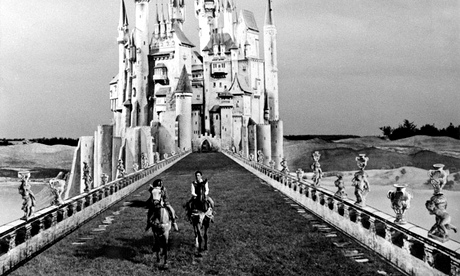
Karel Zeman (1910-1989) was slightly older than most other members of the Czech new wave of the 1960s and didn’t attract the same attention abroad, partly because his gentle, quietly satiric work never invited the ire of the communist authorities. Unlike Miloš Forman, Ivan Passer and Jan Němec, for example, he didn’t go into exile or have his films suppressed after the Prague Spring of 1968. He does, however, have a major claim to a place in cinematic history for the way his fantasy movies combined animation and live action.
In the 1940s, Zeman switched from teaching in the window-dressing school of the Bata Shoe Company to work in a small animation studio in Prague; by the 1950s, he had moved on from short animated movies to full-length pictures. The most famous are a Jules Verne adventure and a Baron Münchhausen picture based on Gustave Doré’s illustrations. Less well known is this exquisite black-and-white anti-war comedy, A Jester’s Tale, inspired by the 17th-century Swiss engraver Matthäus Merian and centring on Petr, a ploughboy forcibly recruited in the 30 years war. He changes sides several times, accompanied by a cynical old mercenary and a pretty country girl, Lenka, who dresses in a jester’s cap and bells.
It’s a slight, predictable story, very close to Fanfan la Tulipe, the popular 1952 French costume comedy set during the seven years war; the hero (Petr Kostka) even looks like his French opposite number, Gérard Philipe, and has a similar innocence and swashbuckling grace. But where the Czech film scores is in the wonderful way live action and animation are integrated with wit and elegance into a magical, fantastical world where the winds of change, represented by an animated old soldier puffing away in the heavens, dictate the arbitrary course of history.
The French film historian Georges Sadoul wrote that Zeman “is justly considered Méliès’s successor”, and Terry Gilliam, Tim Burton and Wes Anderson acknowledge him as a major influence. In 1970, the co-author of A Jester’s Tale, Pavel Juráček, had his anti-authoritarian satire A Case for a Young Hangman banned by the Czech government and never worked again. That same year, Zeman was awarded the title of national artist. Both died in 1989, on the eve of the Velvet Revolution.

